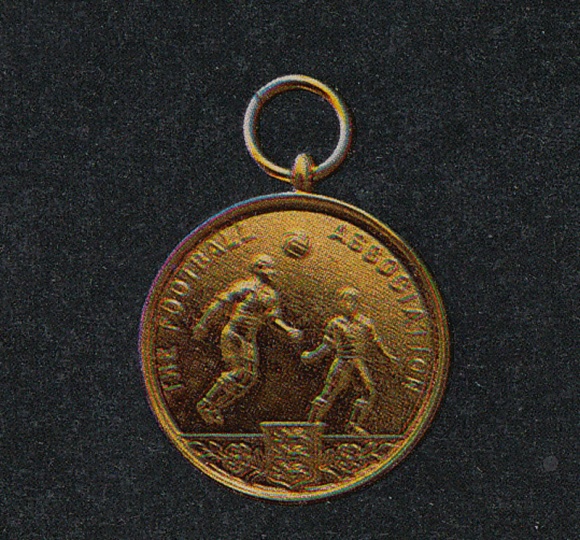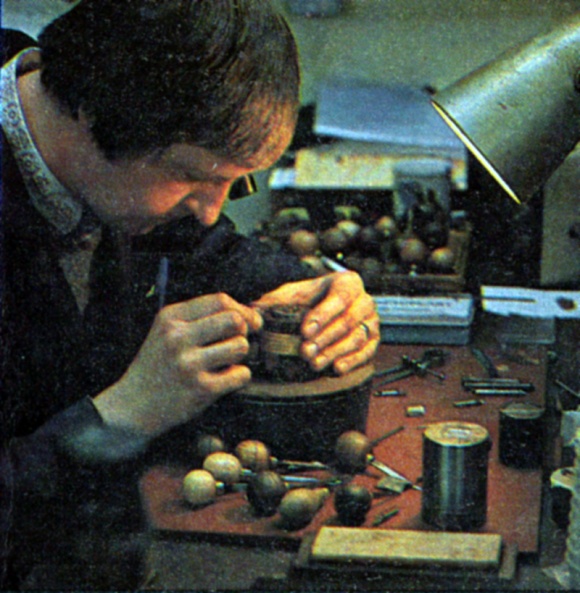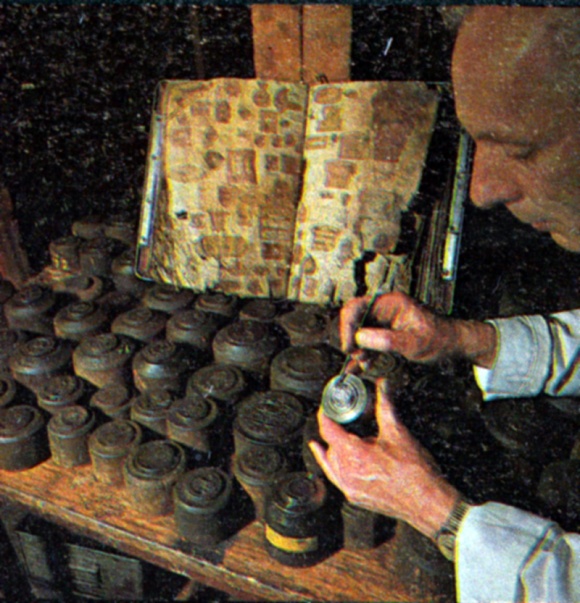The national edition of the Radio Times for 21-27 May 1983 was priced at 25p and this was its striking cover:
While the FA Cup itself is a familiar sight, the details of the medals are far less well known. Inside, Humphrey Evans revealed that:
FA Challenge Cup medals are solid chunks of nine-carat, hallmarked gold, 1¼ inches in diameter. There are 12 each for the two teams plus one each for the referee and linesmen. The winners’ medals are about an inch thick and weigh around 25 grams, or just under an ounce:
The others are thinner and lighter. They cost around £300 each. The front has a design with a couple of footballers in nostalgically baggy shorts either side of a shield carrying the lions of England:
The back just says Challenge Cup winners or runners-up, with the relevant season engraved round the edge.
Evans’ article provides details about how these mementos are created:
In England, the Football Association medals are made by Fattorini and Sons Ltd, badgemakers of Birmingham. Each year they send in a quotation. Each year the FA accepts it, although the contract did drift away from them for a while back in the 1950s.
Fattorini’s is proud of the fact it makes all the badges that go on to Rolls-Royce cars. A couple of men are carving out new dies. Others are soldering suspension rings on to otherwise completed medals. And in glassed-off room at the other end of the floor, Rob Collins, Gold and Silver Supervisor, keeps an eye on the progress of the FA Cup medals.
‘You need someone you can trust 150 per cent,’ says Alan Jones [managing director], and Ron Collins is that someone. He has been with Fattorini’s for 18 years, and before that in jewellery all his life. He is past retiring age, but they haven’t been able to stop him coming in. ‘I should have retired,’ he says, ‘but I like practising activity, not vegetating.’
Collins checks and counter-checks each stage the Cup medals go through. Here are some of them:
When the medals are plated with a final thin coat of pure gold, they are shined up to a high lustre. It is at this point they are sent to the FA in London, and held in a strong room until taken out to Wembley with the FA Cup. Ron Collins sums things up:
‘When they’re gone I can live again!’
Even so, he is still concerned that something might go wrong. The article informs us that:
The worst that has happened is that the medals were put in the wrong-coloured boxes. It should be blue for the winners and red for the runners-up.
Yes, blue as the winners, red as the runners-up. It has a nice ring to it. Especially for 1983. If only Gordon Smith had put that chance away…















Reblogged this on No Standing.
Those last few photos are torture comrade. Always the same outcome. As a 12 year old I had no perspective that that was to be our one and only chance.
Great research – just a shame about the result!
[…] time does ‘Cup Final Grandstand’ start? I’ve misplaced my copy of the Radio Times but I am welling up with anticipation about the big build-up, watching reports from the […]